IMAS Levels of EOD & IEDD Qualifications
By Drew Prater [ RELYANT Global ]
CISR Journal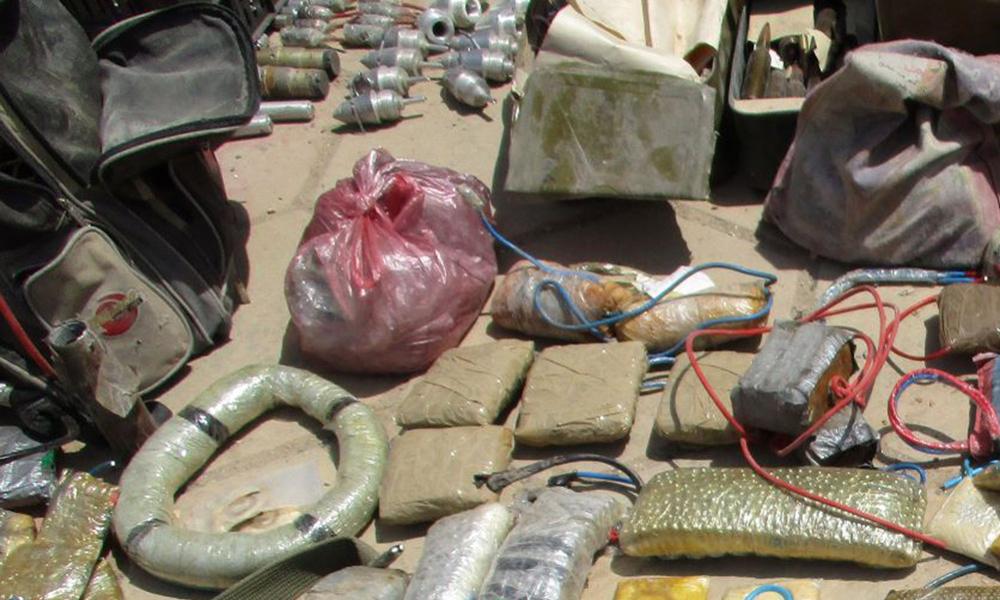
This article is brought to you by the Center for International Stabilization and Recovery (CISR) from issue 27.1 of The Journal of Conventional Weapons Destruction available on the JMU Scholarly Commons and Issuu.com.
Explosive hazards have caused more than 238,000 civilian casualties over the past decade, which only increases the need for these hazards to be cleared.1 Clearance takes time, thoroughness, and personnel properly trained and qualified to detect, identify, render safe, and/or dispose of these deadly devices. The International Mine Action Standards (IMAS) were written to provide basic standards for not only explosive ordnance disposal (EOD) and improvised explosive device disposal (IEDD) operations, but also the required training competencies for each level of both disciplines. The different levels delineate the competencies and responsibilities, while allowing for additional subjects as an agency may see fit.
Introduction
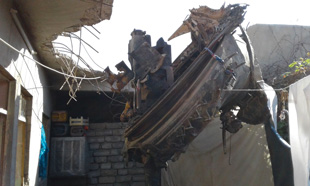
Image 1. A tank turret next to a house with the barrel stuck in the ground; may have a cartridge in the chamber, West Mosul, Iraq. All images courtesy of Drew Prater.
Whether an individual obtains their EOD and/or IEDD training during military service, from a nongovernmental organization (NGO), or a commercial company, the IMAS competency standards guide their level of EOD and/or IEDD certification and ensure those conducting explosive hazard clearance are sufficiently trained and possess the required qualifications.2 These standards allow personnel to be placed in the appropriate position based on their qualifications and experiences, as well as clearly delineate the steps ahead should they wish to advance their EOD and/or IEDD qualifications. The standards for EOD operators is 09.30, Explosive Ordnance Disposal, and their training is covered under Test & Evaluation Protocol (T&EP) 09.30/01/02022, Conventional Explosive Ordnance (EOD) Competency Standards, both of which were recently updated. The standards for IEDD operators is 09.31, Improvised Explosive Device Disposal and the training competencies are covered under T&EP 09.31/01/2019, Improvised Explosive Device Disposal (IEDD) Competency Standards.
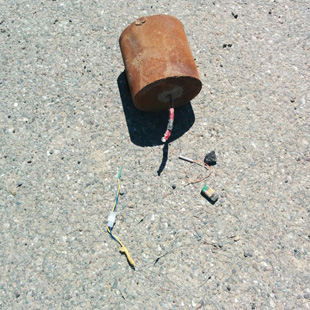
Image 2. An IED located on the highway leading into West Mosul, Iraq.
Each respective T&EP lists the minimum occupational competencies for each skillset and allows for training organizations to add additional topics to suit their unique requirements and/or site-specific needs. All training classes should be listed on the back of the training certificate to assist future employers in verifying what topics were covered in the course, as this allows employers to ensure personnel are familiar with the most recent standards. Courses that combine multiple levels of EOD or IEDD training are acceptable according to IMAS, though practical experience is recommended when progressing through the different levels. Experience is extremely important but theory is needed as a firm foundation and allows the operator to make intelligent, informed decisions when they encounter a new situation.
Ideally, recently trained personnel are placed with mentors of the same or higher level of competency for a limited amount of time. These experienced mentors will certify that the individual understands the specific worksite policies and procedures, and will verify the trainees’ comprehension of the training they received and how to implement it safely and effectively. In the military where this is not always possible, a senior team member would be paired with a new team leader to help share as much experience with the team as possible. With the different EOD and IEDD trainings and courses in countries, it can be a challenge to ascertain not only the validity of certificates, but also the competencies that were trained during the course.
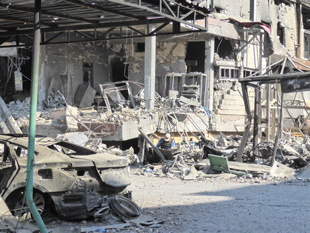
Image 3. Some clearance locations present special hazards (i.e., mixture of ordnance and IEDs, falling debris, unstable structures, etc.).
Comprehensive military EOD and IEDD training courses are typically accepted by the United Nations, NGOs, and commercial companies, even though IMAS specified standards are not necessarily covered. However, there is a definite learning curve for former military EOD/IEDD Operators when embarking on their initial humanitarian mine action work. One of the challenges has to do with acronyms and terms, as some meanings are new while others are new terms with familiar meanings. Many standards are different, such as demolition misfire wait times, soak times, personal protective equipment (PPE) levels, etc., as well as their references. The IMAS, country-specific regulations, or agency standard operating procedures (SOPs) will dictate the standards, instead of military reference materials and orders from higher headquarters. There is always new equipment to learn, but that is usually the easiest segment to learn for EOD and IEDD Operators.
EOD Clearance Levels and Working in the Field
IMAS categorizes EOD into four individual qualifications: Levels 1, 2, 3, and 3+, which build upon each other—Level 1 is the firm foundation and Level 3+ is the capstone. Even qualified and experienced personnel should receive training on local explosive hazards previously encountered prior to commencing operations, as each site is unique and may present special hazards. Site-specific training is typically instructed by the senior EOD or IEDD Operator on site but it is not a requirement. While conducting clearance operations in Iraq (2016–2018), our new EOD operators received a briefing on the current list of munitions encountered, with emphasis on munitions that were particularly sensitive, as well as our operating standards. This information helped to ensure a single standard, and safety, across multiple operational teams. EOD is a challenging career field which requires the operator to identify munitions and fuzing systems from all over the world and from any time period. During our Iraqi clearance operations, we recovered and rendered safe ordnance from twenty-three different countries. Some of the munitions were of recent manufacture, some were first-seen ordnance, while others were of older manufacture, with one example originating from the 1950s.
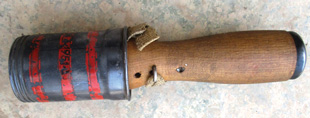
Image 4. A Hungarian anti-personnel hand grenade manufactured in 1951 and recovered in 2018 in West Mosul, Iraq.
There are numerous critical skills taught throughout the different levels of EOD. Some are taught in classrooms, while others are taught and/or reinforced during practical exercises. Accessing unexploded ordnance (UXO) and persistence in a task are two of the most important, and difficult, skills to learn.
Another challenge to the EOD operator is accessing the munition. While most are on or near the surface, some are deeply buried in the earth or are in the upper floors of buildings where accessibility is an issue. On one mission, our team was tasked with checking on a possible aircraft bomb inside of a house in a village south of Mosul, Iraq. The tasking stated there was a hole in the ceiling and a corresponding hole in the center of an interior room with the homeowners testifying that they had been caused by an aircraft bomb when ISIS was occupying the house. After some measurements and discussion with the villagers, we theorized the bomb to be a Mk 82 500 pound high explosive bomb, most likely with some type of guidance package due to the precision strike and the description of pieces the homeowners had found and discarded.
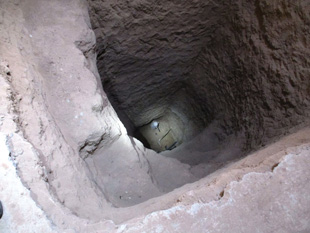
Image 5. A nine-meter-deep excavation showing the tail of a bomb inside a house south of Mosul, Iraq.
Based upon our knowledge of the munition, we encouraged the homeowners to leave the bomb in place, repair the damage, and they would have an interesting story to add to their family history. We knew there was no possibility of the bomb detonating, and this is a procedure long practiced in various parts of the world, most times with bombs much less stable than the current inventory. The homeowners were adamant about removing the bomb, even after we explained the long process to them, so we commenced operations. One of the first steps was to ensure the bomb had not porpoised (when a bomb enters the earth and curves back toward the surface) and was near ground level outside the home, but this was not the case. We started excavating and dumping the spoils next to the hole.
As we chased the bomb on its downward path, we had to move the spoils outside so we could enlarge the hole several times until it was a ~2.0 meters (~6.56 feet) square, encompassing nearly the entire room. What started as simply stepping into the hole quickly grew to cutting steps into the side, to using a small ladder, then a big ladder, and finally using steps cut into the side to get down to the big ladder. Ultimately, dirt had to be hauled up via rope and bucket due to the depth. The entire excavation took several weeks, especially since the deeper we went, the harder the soil and the slower the digging became. Eventually, we found the tail of the bomb at a depth of ~9.0 meters (29.53 feet) and by that time we knew the bomb was 2.74 meters (9.0 feet) in length by itself.
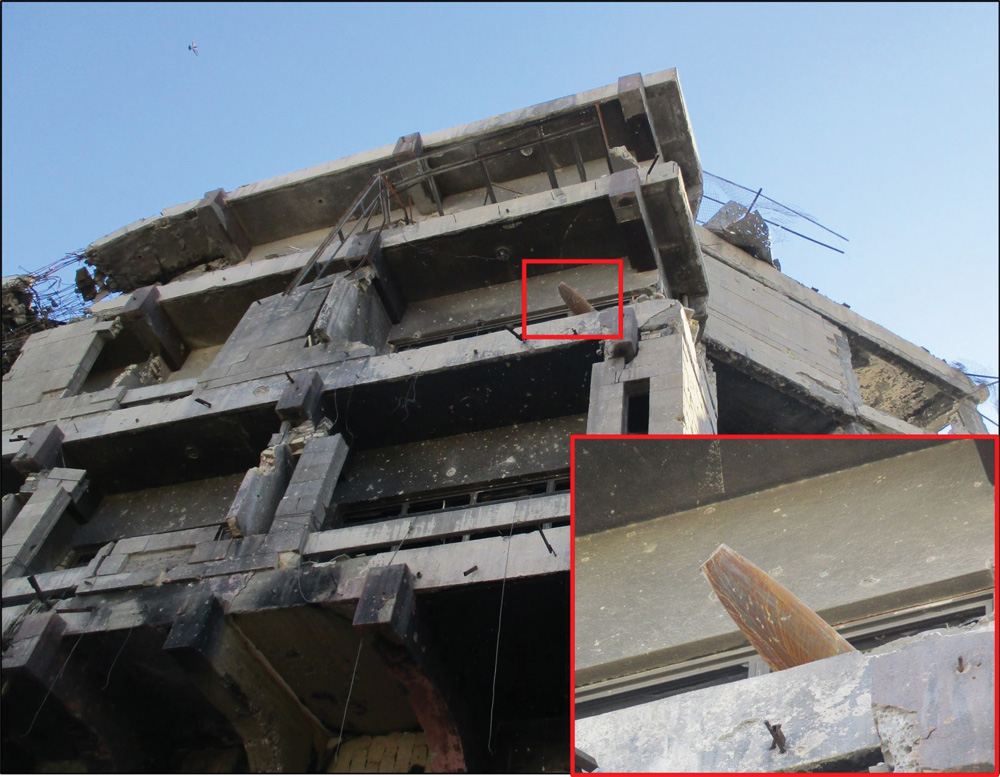
Image 6. A 500 lb. bomb located on the fourth floor of a building with the stairs mostly destroyed, West Mosul, Iraq.
Accessing munitions, even when they are visible, can still be a challenge. For instance, in west Mosul, Iraq, our teams had been aware for several months of a bomb located on the fourth floor of a building, but the building was barricaded and we were clearing taskings in other areas of the city. In time we received a clearance tasking for that area and following removal of the barricades, our team was able to enter the building, only to find the stairs were partially destroyed. Very carefully, several members of the team made their way to the ordnance and identified the bomb and partially destroyed fuze. After the other members of the team withdrew, the team leader rendered the bomb fuze safe and, after much deliberation, came up with a plan to safely remove the bomb from the fourth floor. Critical thinking is an essential skill which is taught through practical exercise. This can be applied in so many areas of EOD and IEDD and requires not just looking at the problem but understanding all aspects of the issue as much as possible.
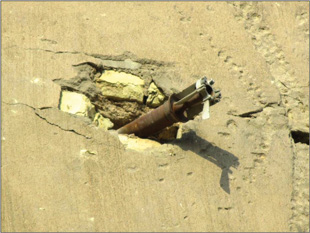
Image 7. Scene from the second story of a house in Fallujah, Iraq. A determination must be made if the munition is live or expended.
Image 7 is one of the pictures we used in our site familiarization training for Fallujah and Mosul, Iraq, as well as subsequent EOD training courses. This rocket is sticking out of a second story wall with no easy access from the interior, exterior, ground, or roof. In many instances, EOD operators will see this and start to think of how to safely remove the explosive hazard because they focus on the munition, but miss the bigger picture of the fragmentation pattern, which denotes that the munition has fired and can be safely removed in a more aggressive manner. The dual fragmentation pattern also allowed us to positively identify the munition.
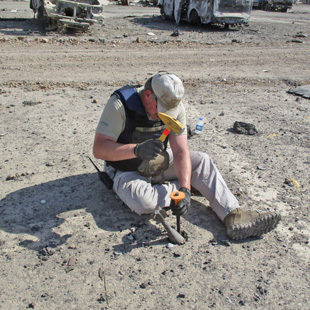
Image 8. Carefully chiseling a mortar out of a parking lot in West Mosul, Iraq.
Sometimes the problem isn’t locating or accessing ordnance but rather figuring out how to remove it safely from its current location. This is where different render safe methods, as well as identifying and understanding the different fuzes, come into play. Even if a munition is accessible, challenges can still exist in safely removing the munition from its environment. The mortar in Image 8 was very easy to locate and access but was stuck in the asphalt parking lot of Ibn Sena Hospital complex in West Mosul, Iraq, and we did not have explosives, so destruction in place was not an option. After identification of the mortar and most likely fuze (based upon the same mortars throughout the immediate area), we determined the safest method of removal was to carefully excavate around the mortar until it could be safely removed from the asphalt.
After several interviews, site visits, and checks with various detectors, a team uncovered a 500 kilogram (1,102.31 pounds) concrete piercing bomb in the middle of an Afghan village (with no concrete within a 100 kilometer radius), as seen in Image 9. Finding the bomb was relatively easy but the safe removal of it without endangering any villagers or damaging buildings proved an interesting task. It was determined that the risk from removing the fuze prior to moving the bomb was lower than moving the fuzed bomb. The fuze was successfully removed using an explosive technique, the bomb removed, and the hole refilled so the village could return to normal and be explosive hazard free.
EOD Certification
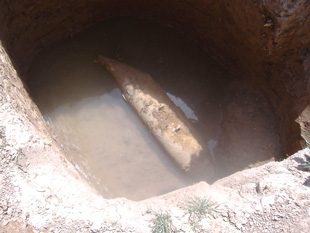
Image 9. A bomb in the middle of an Afghan village in Herat Province, Afghanistan.
The basic level for EOD is Level 1 and there are ninety-three required competencies for certification. This qualification permits the operator to locate, expose, and destroy in place specific individual munitions upon which they have been trained. The clearance is only to take place in a controlled environment, such as a clearance site, technical survey, etc. The EOD Level 1 graduate will also function as a team member, assisting EOD Level 2 and 3 Operators on tasks requiring additional support. The intermediate level for EOD is Level 2 and covers eighty-nine required competencies which build upon the ninety-three competencies already learned in EOD Level 1 training. An EOD Level 2 qualification enables the operator to perform all EOD Level 1 tasks, as well as determine which munitions are safe to move and/or transport, as authorized by an EOD Level 3 Operator or above. An EOD Level 2 Operator can also conduct simultaneous disposals of multiple munitions upon which they have been trained. The EOD Level 2 operator can conduct tasks in all environments with the written approval of an EOD Level 3 or 3+ operator.
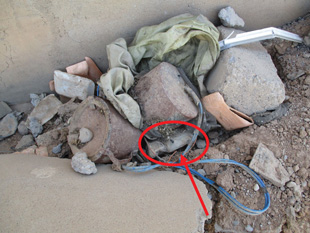
Image 11. With some of the garbage removed, note the remote-control fuzing system under the main charge on the right.
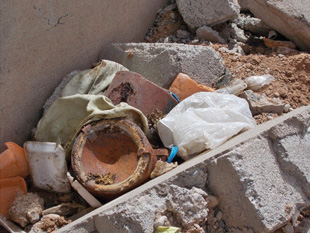
Image 10. Picture received reporting two explosive charges among rubble and garbage in West Mosul, Iraq.
EOD Level 3 has 156 required competencies that build upon the 182 competencies of EOD Levels 1 and 2, allowing the operator to perform all EOD Level 1 and 2 tasks, in addition to disposal of up to 50.0 kilogram (110.23 pounds) net explosive quantity of munitions and conduct render safe procedures on munitions for which they have been trained. EOD Level 3 Operators can also authorize, in writing, an EOD Level 2 Operator to perform tasks in various environments and to make decisions regarding the moving and transporting of munitions. The advanced EOD Level 3+ covers six different competencies: advanced explosive theory, bombs, armored fighting vehicle clearance, basic chemical munitions and procedures, bulk demolitions, and guided weapons. These competencies build upon EOD Levels 1, 2, and 3 competencies and may be individually taught; therefore an EOD Level 3+ Operator does not necessarily mean they have been trained in all six skillsets.
IEDD Certification
IEDD is a separate and more complicated skillset of EOD. The IEDD operator must be able to identify explosive hazards placed in or camouflaged as common items (vehicles, rocks, cans, drums, etc.) and adapt to ever-changing scenarios when what is reported turns out to be something different. Even when ISIS put IED manufacture on an industrial scale, IEDD operators could not assume similar-looking IEDs functioned in the same manner as IEDs they had worked on previously. Safely locating IEDs can be a major concern, but once located, access and rendering safe can also present challenges.
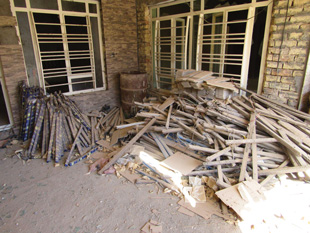
Image 12. Hundreds of IED pressure plates awaiting deployment, Fallujah, Iraq.
IMAS also categorizes IEDD training into four individual qualifications: Levels 1, 2, 3, and 3+, which build upon each other with Level 1 as the solid foundation and Level 3+ as the highest level. Under IMAS, IEDD qualifications are only recognized if the holder also has the equivalent EOD qualification per T&EP 09.30/01/2014. Having EOD as a base on which to build the IEDD competencies should help ensure that the IEDD operator thoroughly understands explosive safety and allows them to safely identify, render safe, and/or dispose of munitions which may be used in IEDs, a common tactic employed globally. The United Nations Improvised Explosive Device Disposal Standards lists slightly different terminology for the four individual IEDD qualifications: Basic IEDD operator, IEDD assistant, intermediate IEDD operator, and advanced IEDD operator.3 These qualifications fall in line with IMAS and its requirement for equivalent EOD qualifications. All tasks listed are in addition to their requisite EOD level qualification tasks.
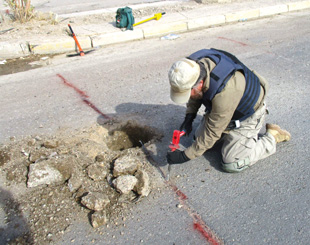
Image 14. Cautiously chiseling detonating cord out of Highway 10 in Fallujah, Iraq.
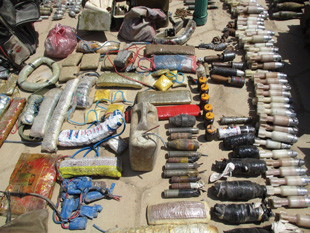
Image 13. Hundreds of IED main charges and IEDs recovered from a single site, East Mosul, Iraq.
A Level 1 IEDD qualification encompasses ninety-two competencies and enables the graduate to prepare IEDD equipment, understand overall threat context, threat analysis and threat assessment processes, search for IEDs while under supervision as part of a clearance team and, after a site-specific brief, recognize IEDs common to the operating area. The Level 1 IEDD Operator may also assist in the execution of semi-remote actions as necessary. The Level 2 IEDD qualification covers sixty-seven competencies, building upon the ninety-two IEDD Level 1 competencies. Level 2 IEDD enables the opeartor to perform all IEDD Level 1 tasks, as well as supervise the preparation of IEDD equipment, understand and critically evaluate the assessed threat and, under supervision, apply remote or semi-remote actions designed to locate IEDs.
IEDD Level 3 qualifications cover 106 competencies, in addition to the previously learned 159 competencies of IEDD Levels 1 and 2. This qualification enables the IEDD Level 3 Operator in a permissive environment to conduct render-safe procedures for IEDs and their final disposal. The IEDD Level 3+ advanced qualification covers an additional forty-seven competencies over the 265 competencies previously acquired. These further competencies are for specific threats in particular contexts in any environment, not just permissive.
Final Thoughts
There is no doubt a need for standardization of training for EOD and IEDD operators, not only for civilians, but former military personnel as well is necessary, and IMAS provides these standards. While countries do not have to take notice of international standards, many have used them as a basis for their own EOD and IEDD directives, drawing upon the decades of experience that have been the firm foundation that are written into each standard.
Drew Prater
C-IED Subject Matter Expert
RELYANT Global, LLC
 Drew Prater is RELYANT Global, LLC’s Counter-Improvised Explosive Device (C-IED) Subject Matter Expert for operations/training across five continents. He provides expert technical solutions, implementation, management, and oversight for C-IED, EOD, and IEDD services. Prater’s over thirty years of experience includes an outstanding record of standing up operations at locations ranging from the world’s most remote, austere, and high-threat settings to populated, high-profile sites. Prater served in the U.S. Army from 1987 as Supply/Armorer until he graduated from EOD School in 1992. He served as Master EOD Technician until his retirement in 2011 as First Sergeant of the 202nd Ord Co (EOD). Prater also graduated from the FBI’s Hazardous Devices School (1998), IMAS EOD Level 3+ (2006), and numerous explosive-related schools with the U.S. Military, Bureau of Alcohol, Tobacco, Firearms, and Explosives, the FBI, and other organizations. He is also a consultant for Bomb Techs Without Borders (BTWOB.org), providing expertise to international operations with a current focus on Ukraine operations, ordnance, and training.
Drew Prater is RELYANT Global, LLC’s Counter-Improvised Explosive Device (C-IED) Subject Matter Expert for operations/training across five continents. He provides expert technical solutions, implementation, management, and oversight for C-IED, EOD, and IEDD services. Prater’s over thirty years of experience includes an outstanding record of standing up operations at locations ranging from the world’s most remote, austere, and high-threat settings to populated, high-profile sites. Prater served in the U.S. Army from 1987 as Supply/Armorer until he graduated from EOD School in 1992. He served as Master EOD Technician until his retirement in 2011 as First Sergeant of the 202nd Ord Co (EOD). Prater also graduated from the FBI’s Hazardous Devices School (1998), IMAS EOD Level 3+ (2006), and numerous explosive-related schools with the U.S. Military, Bureau of Alcohol, Tobacco, Firearms, and Explosives, the FBI, and other organizations. He is also a consultant for Bomb Techs Without Borders (BTWOB.org), providing expertise to international operations with a current focus on Ukraine operations, ordnance, and training.
